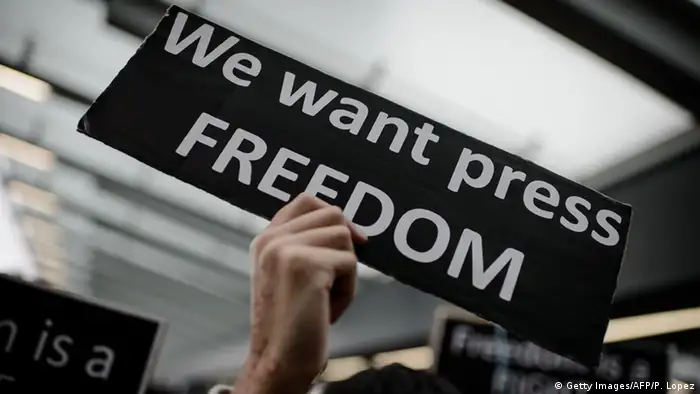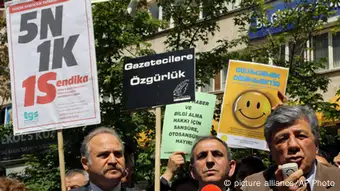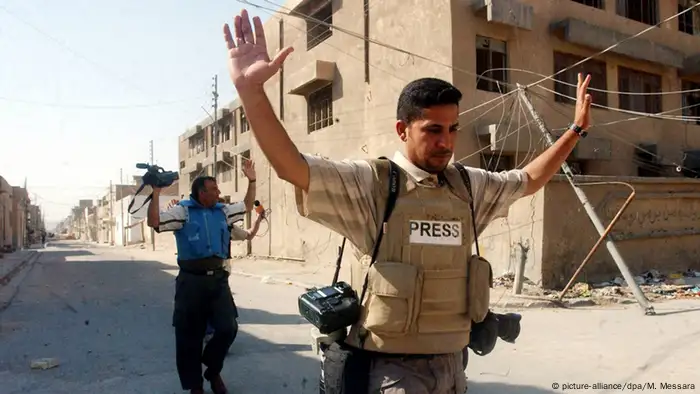Insights
Global press freedom at a 12-year low
Global press freedom has come under increasing pressure from political, criminal and terrorist forces seeking to co-opt or silence the media. Jennifer Dunham from Freedom House talks about the 2016 press freedom report.
The latest report on freedom of the press from the US-based democracy watchdog Freedom House is entitled "The Battle for the Dominant Message".
In the past year, journalists and media outlets have come under greater pressure to toe the political line, resulting in decreased public access to unbiased information and in-depth reporting. Physical violence and harassment against journalists also increased in 2015, particularly in Syria and other parts of the Middle East, but also in the relatively open media environments of Europe. #mediadev spoke to Jennifer Dunham, the Freedom of the Press research director.
#mediadev: Your report says that in 2015, global press freedom declined to its lowest point in 12 years. Why is it getting more and more difficult to publish information and opinions without interference?
Jennifer Dunham: We saw several reasons why the score continued to decline this year. The first is a increase in polarization and partisanship in media environments. It is becoming increasingly difficult for journalists to produce independent and unbiased reporting. They are increasingly being pressured by governments or media owners, even by criminal gangs or terrorist groups, to take sides. This is especially prominent in the Middle East. But we also saw it in parts of Europe, mainly Central Europe, also in parts of Latin America, and also in the US, with the way the presidential campaign is covered.
Another big reason for the decline is the continued high level of violence against journalists. We are seeing that in war zones in places in the Middle East, but also in Latin America and increasingly also in South Asia. This is not anything new, but it continues to be a huge problem.
In the report you depict cases of extreme violence against journalists. Which topics are particularly dangerous to cover?
We often hear about it being difficult to cover war zones or national security or terrorism issues. But there are other things that do not get talked about that much, for example, covering issues related to the environment and land development. In parts of South and Southeast Asia, we see a lot of attacks on reporters who are trying to work on environmental issues. Recently, we saw the murder of a prominent activist in Honduras working on land issues. There is also a lot of harassment of journalists who try to cover it, in Brazil for example, which has one of the highest rates of violence against journalists.
Another big issue is corruption, especially local corruption. Reporters working on the local level are less prominent and so they are targeted. Especially in Central America, the issues of corruption and organized crime are so intertwined that there is not only a high level of harassment, threats and violence against journalists, but also a high level of impunity.
The report emphasizes the role of courageous journalists. What could be done to improve journalists’ safety?
There are a lot of measures that have been taken on a national or international level. For example in Mexico, there have been laws passed that take crimes against journalists to the federal level. But we just do not see these measures enforced. There are a lot of international organizations working on this, including Freedom House. We have a program in Mexico that really works on improving not just physical safety but also digital security for journalists.
The cases of journalists being murdered by Islamic State got a lot of attention. Unfortunately that hasn’t encouraged increased protection for journalists.
What we try to highlight in the report is that there are unheralded local journalists getting attacked for reporting on everyday topics in many countries around the world. The first step is to highlight this and to pressure governments to really take these cases seriously and to prosecute [the attackers].
Despite all the difficult trends you mentioned, are there any bright spots in the report?
The work of journalists working under pressure is really something to highlight. When it comes to countries, we saw some improvements this year, but they were really kind of just here and there. For example, Sri Lanka saw the biggest improvement in terms of points. With the new government there was a dramatic turnaround in media freedom in that country, where media freedom had been under pressure for a long time. Another example of improvement would be in Burkina Faso, where after a lot of political difficulties, elections were eventually held.
In both countries you saw a transition to a more democratic government. And … with that comes greater media freedom. The question is, how do you consolidate those gains?
In a number of countries like Armenia, Georgia or Kenya, the online public sphere seems to be more open than the media in general. On the other hand, online content regulation is increasingly becoming an issue in every single region you observed. Is the digital sphere rather refuge or threat to freedom of expression?
The digital sphere has been generally a place where people go to get more independent types of pieces or opinions. If you compare the Internet freedom scores of our Freedom on the Net report with the press freedom scores you see that those countries that you mentioned are freer with respect to their Internet freedom. But for instance in Kenya there are pieces of legislation with which the government wants to intensify online communication regulation. In general the pattern is that the Internet, or the digital sphere, is more free. And even in China, in one of the most regulated online environments, you find people who can get around the firewalls and still communicate online about things that they want to talk about. It is very hard for governments to catch up with technology unless you are in a place like North Korea where they just shut down the Internet.
Which countries do you suggest we should watch more closely?
We identified several countries as countries that could improve or decline in the next couple of months. One was Argentina. In recent years, there was a big battle between President Kirchner and especially the Clarín group over the media law and there has been a strong anti-media tone on the side of President Kirchner’s administration.
Another country we are watching is Ghana, and I would like to point to Ghana because in the 2016 report it declined from "Free" to "Partly Free". Previously, it was the only country on the mainland continent of Africa that was "Free". The decline was due to a combination of political and legal pressure by the government on the press, an increase in violence against journalists and a lot of legal harassment of both journalists and media freedom organizations. There are elections coming up in late 2016 and we are watching to see if the environment becomes more repressive in advance of the elections as the government tries to temper criticism.
This interview has been edited for brevity and clarity.
Jennifer Dunham is the research director of Freedom of the Press and Freedom in the World at Freedom House. A specialist on global press freedom trends, she regularly briefs government officials, donors and the media on the findings of the Freedom of the Press report and general media freedom issues.
DW recommends
WWW links
- Date 27.04.2016
- Author Alexander Matschke
- Feedback: Send us an e-mail. Please include your name and country in your reply.
- Print Print this page
- Permalink https://p.dw.com/p/1IdIP
- Date 27.04.2016
- Author Alexander Matschke
- Send us your feedback.
- Print Print this page
- Permalink https://p.dw.com/p/1IdIP




